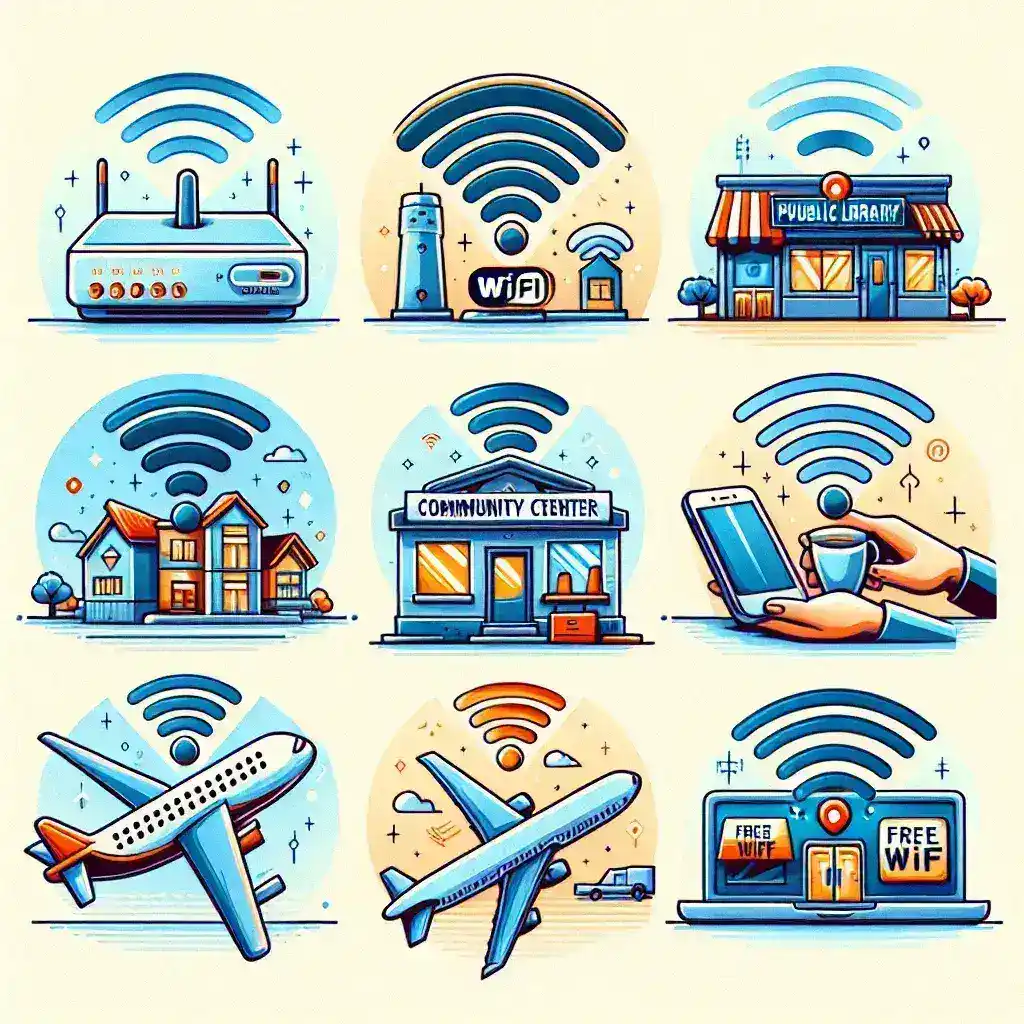In today’s digital age, having access to the internet is more than a convenience; it’s a necessity. However, the cost of maintaining a home WiFi connection can add up. Fortunately, there are ways to get free WiFi at home. Explore these seven methods to stay connected without any costs.
1. Use Public WiFi Networks
Public WiFi networks are widely available in places like coffee shops, libraries, and malls. Many communities have also established open WiFi networks for the public.
Benefits of Public WiFi
- No cost involved
- Widely available in urban areas
Drawbacks of Public WiFi
- Security risks
- Unstable connection
2. Hotspot from Mobile Phones
Most modern smartphones have a built-in feature to use your mobile data as a WiFi hotspot. This can be a quick fix for internet access at home.
Pros of Using Mobile Hotspot
- Convenient and portable
- Can use existing mobile data plans
Cons of Using Mobile Hotspot
- Consumes mobile data quickly
- May incur additional costs if data limits are exceeded
3. WiFi from Your Neighbor
Sometimes, neighbors are willing to share their WiFi password. Establishing a good rapport with them can make this possible.
Steps to Secure Neighbor’s WiFi
- Politely ask for their permission
- Agree on a mutual benefit or compensation
Why Sharing WiFi Can Be Beneficial
- Cost-sharing reduces overall expenses
- Increase network security with a common firewall
4. Municipal Wireless Networks
Some cities offer free WiFi as part of their municipal services. These networks can be accessed in various locations across the city and sometimes cover residential areas.
Advantage of Municipal Networks
- Typically free of charge
- Safe and regulated by local authorities
Disadvantage of Municipal Networks
- Limited coverage
- Potentially slower speeds
5. Programs and Services for Low-Income Families
Several organizations provide free or discounted internet services to low-income families.
Eligibility Criteria
- Based on income levels
- Eligibility for other social services
Popular Programs
- Connect2Compete
- Lifeline Program
6. Use a WiFi Extender
A WiFi extender can capture and amplify a nearby signal, potentially allowing you to access a neighbor’s or public network from the comfort of your home.
Benefits of WiFi Extenders
- Enhances signal strength
- Cost-effective solution
Downsides of WiFi Extenders
- Dependent on the primary network’s quality
- May require technical knowledge to set up
7. Join Community Networks
Community networks are local initiatives where members share internet connections. These can be a practical way to access free WiFi.
How Community Networks Work
- Members share their excess bandwidth
- Usually maintained by local volunteers
Advantages of Community Networks
- Promotes a sense of community
- Often free or very affordable
Table: Quick Overview of Free WiFi Options
| Method | Cost | Pros | Cons |
|---|---|---|---|
| Public WiFi | Free | Widely available | Security risks |
| Mobile Hotspot | Varies | Convenient | Consumes data |
| Neighbor’s WiFi | Free/Cost-sharing | Cost-effective | Dependent on neighbor’s network |
| Municipal Networks | Free | Safe | Limited coverage |
| Low-Income Programs | Free/Discounted | Affordable | Eligibility required |
| WiFi Extender | Low | Boosts signal | Dependent on primary network |
| Community Networks | Free/Low | Community-driven | Varies by location |
Choosing the best method to get free WiFi at home depends on your specific circumstances and needs. Explore these options to determine which one works best for you.

